PAOC Spotlights
The 2015 PAOC Retreat: Jiminy Peak
This year’s PAOC retreat in the beautiful Berkshire Mountains surrounding Jiminy Peak Resort gave attendees wonderful opportunities to befriend new colleagues, learn about new research, and enjoy time away from bustling Boston.
***
Despite the cold, cloudy weather and constant threat of rain thanks to approaching Hurricane Joaquin, this year’s PAOC retreat was nothing short of fun, warm, and adventurous. The endless food and drink, fascinating scientific discussions, and stellar variety show were among the highlights, and outdoor activities in the beautiful Berkshire Mountains surrounding Jiminy Peak Resort gave attendees wonderful opportunities to befriend new colleagues and enjoy time away from bustling Boston.
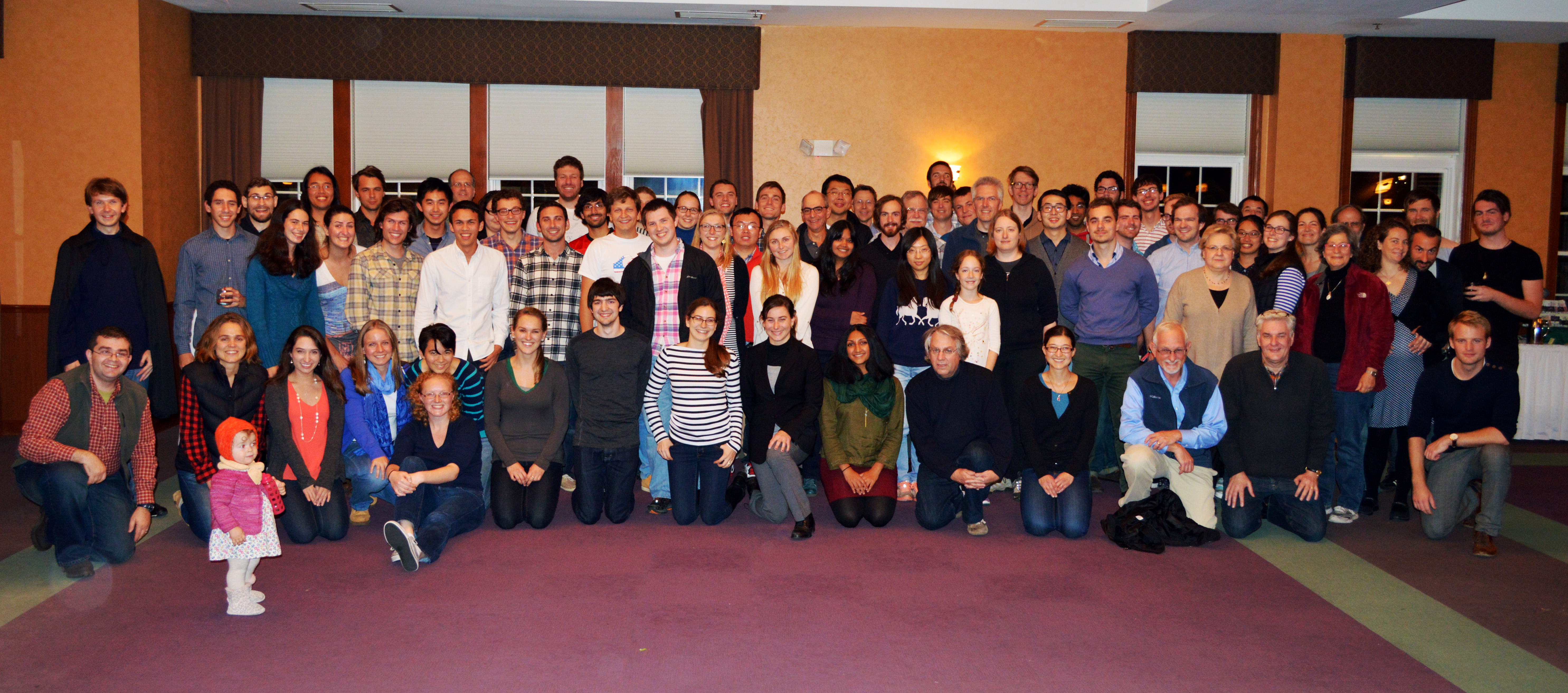
As students, faculty, and staff trickled in for dinner Friday night, MIT Professor Dan Rothman gave the ‘State of PAOC’ address. Overall, the program is healthy and members are generally happy with the direction it is evolving. However, the general consensus was that PAOC could foster more interdisciplinary collaborations.
After socializing Friday night, attendees gathered early Saturday morning for a series of talks about carbon and climate change. Invited speakers Monika Kopacz, Howard Herzog, and Doug MacMartin each brought unique perspectives ranging from from the inner workings of government agencies and the economic realities of mitigation strategies to the current state of geoengineering research.
Carbon Conversations
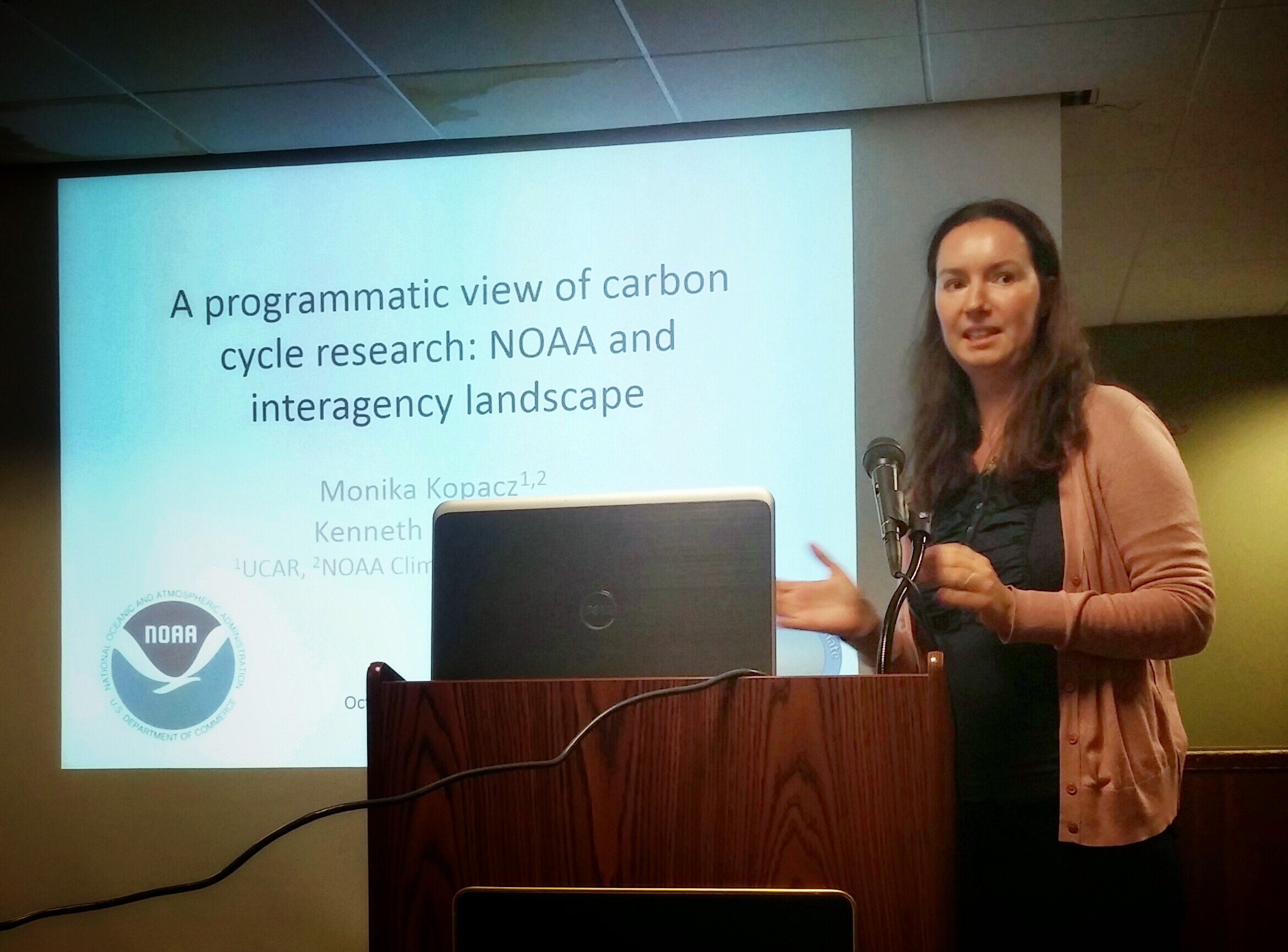
Kopacz, manager of NOAA’s Atmospheric Chemistry, Carbon Cycle, and Climate Competitive Research Program, gave an overview of the administration’s climate research projects. They include the impacts of wildfires currently ravaging the western U.S., oil and gas emissions, urban emissions, the role of the nitrogen cycle, and carbon’s role in the water cycle to name a few. She also described how agencies in Washington D.C. work together on this important issue through interdisciplinary working groups.
Next up was Herzog, a Senior Research Engineer in the MIT Energy Initiative. He spoke about carbon capture technology, which separates carbon from industrial and energy related sources and keeps it isolated from the atmosphere. Before, researchers thought of storing carbon in the ocean, which would only isolate the element for a few centuries. Now they are exploring more permanent solutions, such as storing it underground in depleted oil and gas reservoirs, which would keep the carbon isolated for thousands to millions of years. But successful climate change mitigation will take more than capturing what’s already in the atmosphere. “There’s no silver bullet,” said Herzog. “We need strong climate change policies and a diverse portfolio of solutions.”

Carbon capture technology is ready for commercial scale, but the economic market is almost non-existent, Herzog noted. “It’s hard to compete against cheap fossil fuel, especially natural gas,” he said. “Until we get policies that create markets for these technologies to work, things will remain the same. [Carbon capture combined with other mitigation strategies and strong economic policies] is our best chance of avoiding the most serious impacts of climate change.”
The day’s last speaker was MacMartin, a Professor in computing and mathematical sciences at the California Institute of Technology who researches geoengineering as a possible climate intervention strategy, among other things. Geoengineering, also called solar radiation management, involves intentionally emitting particles into the stratosphere that reflect ultraviolet radiation back into space. Although the technology is not currently a reality, it could become one in the next 20 years or so, said MacMartin. Which is why it’s important to understand the scientific, economic, and societal facets of this somewhat controversial strategy.
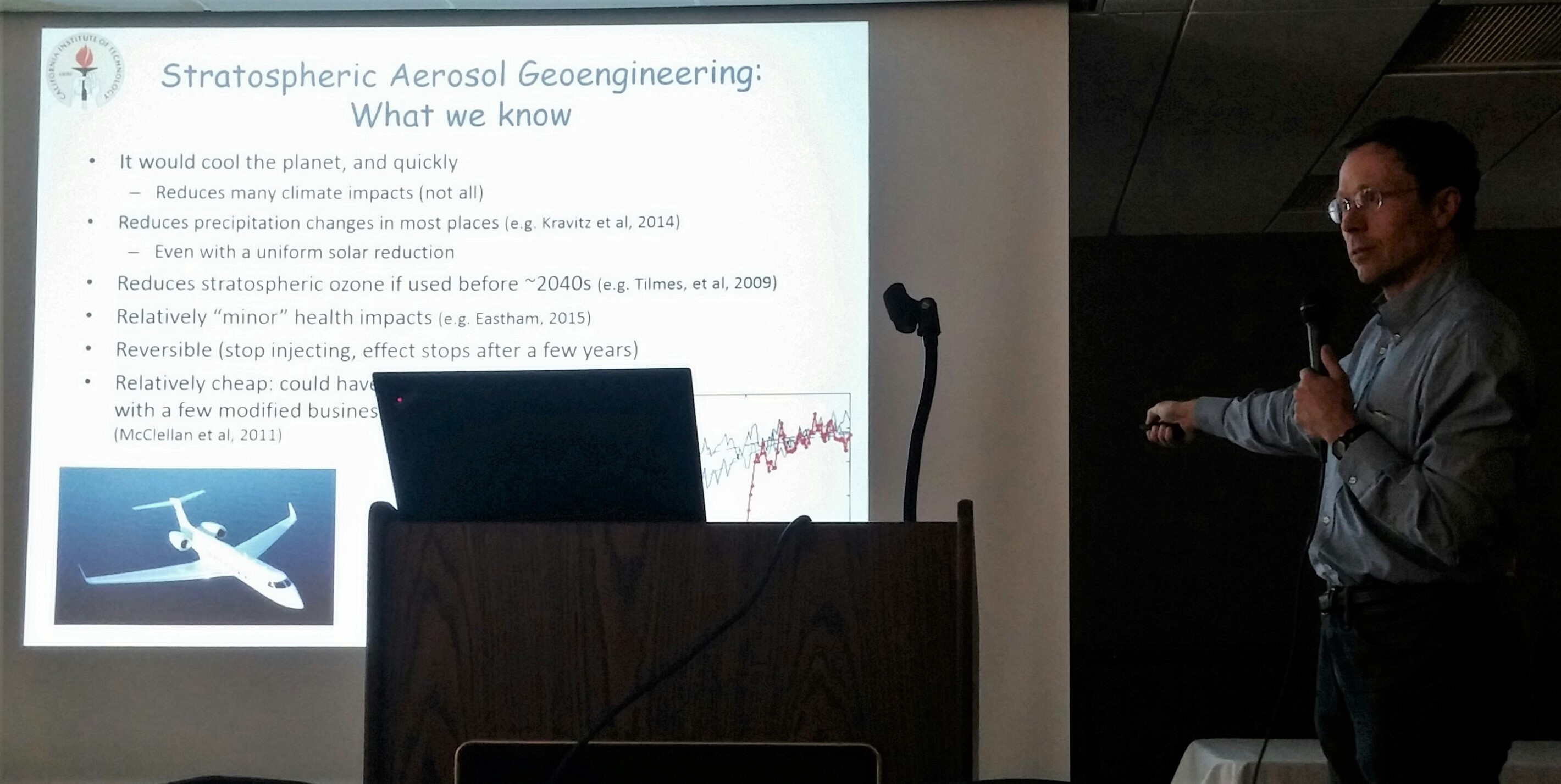
Geoengineering could be a fast-working and relatively cheap solution that reduces climate damage and risk, said MacMartin. He and colleagues are currently working on how to best design geoengineering strategies to address specific climate change issues and assessing their uncertainties. But there are reasons to be apprehensive about using geoengineering, including increased ozone depletion and a lack of understanding of the potential regional precipitation response, atmospheric dynamics, cloud effects, and ecosystem response. And once we start emitting particles into the stratosphere we can’t stop, otherwise warming will continue, MacMartin said.
Beyond the scientific aspects, there are socio-political effects as well. MacMartin noted a few burning questions that researchers are considering, such as: How will the public perceive geoengineering, and will they understand its nuances? Will people use this technology as an excuse to emit more carbon dioxide? Who are the decision makers, and will there be oversight?
Climate and Communication
After a short coffee break, the invited speakers were joined by Professors Kerry Emanuel and Susan Solomon for a question and answer panel discussion that largely focused on the ethics of certain climate mitigation strategies and science communication.
Asked about her opinion of geoengineering research, MIT Professor and atmospheric chemist Susan Solomon emphasized the potential societal impacts. “You don’t get to do science in a vacuum. That’s not how the world works. It’s a social process. We can’t go around assuming our science doesn’t have consequences.” She continued, “I’m not saying we should have zero [geoengineering] research, but we should be aware about how it will be received. Are we okay with the trade-offs? We have to look at the problem in all of its complexity. We keep leaving out the human and societal variables from the equation.” MacMartin agreed with Solomon on this point, and noted they only disagreed on what the consequences of geoengineering might be.
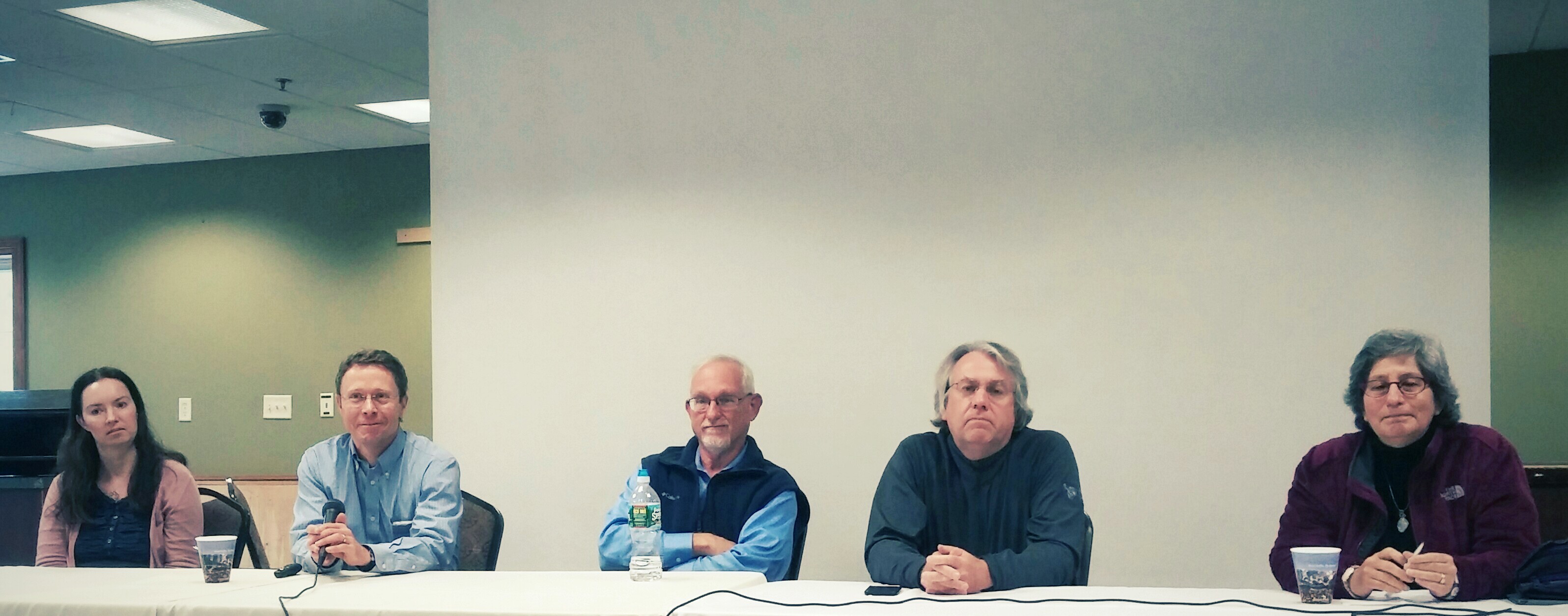
The conversation then moved toward what MIT students can do to combat climate change. “There’s large frustration about the lack of progress on climate change,” said Herzog. “Social unrest is a critical piece [of spurring change]. Young people have to get mad, otherwise we’ll continue having the same conversation with little to no progress,” Emanuel added. Protests and rallies like the ones held by Fossil Free MIT are a good place to start, but there are other things students can do that have more immediate impacts. Emanuel suggested petitioning the Institute to work on making campus buildings more energy efficient.
The panel wrapped up with a discussion of science communication and how scientists can have more control over their message to combat misconceptions. “Times have changed with social media and the internet. Its distracting, but a reality,” said Herzog. “That’s why I talk to the press whenever I have the chance to get sane things out there. It’s a different world than it was 20 years ago.”
The Fun Continues
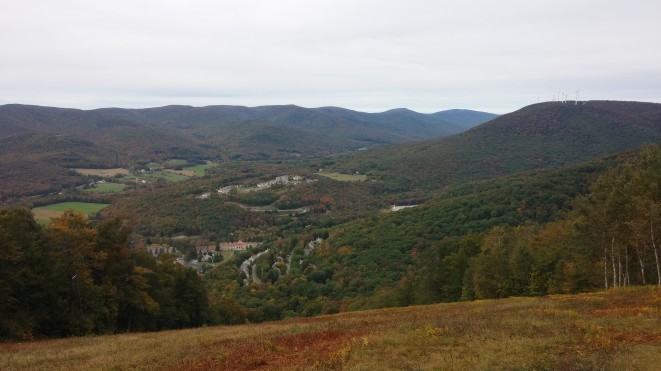
In the afternoon, attendees had their choice of outdoor activities including a ropes course, adventure park, or hiking Mount Greylock and Jiminy Peak. The crisp air and colorful foliage made for breathtaking views, but the weekend’s highlight was Saturday night’s variety show hosted by PAOC graduate student Vince Agard. His dry, mildly sarcastic wit and impeccable timing kept the audience laughing between acts.
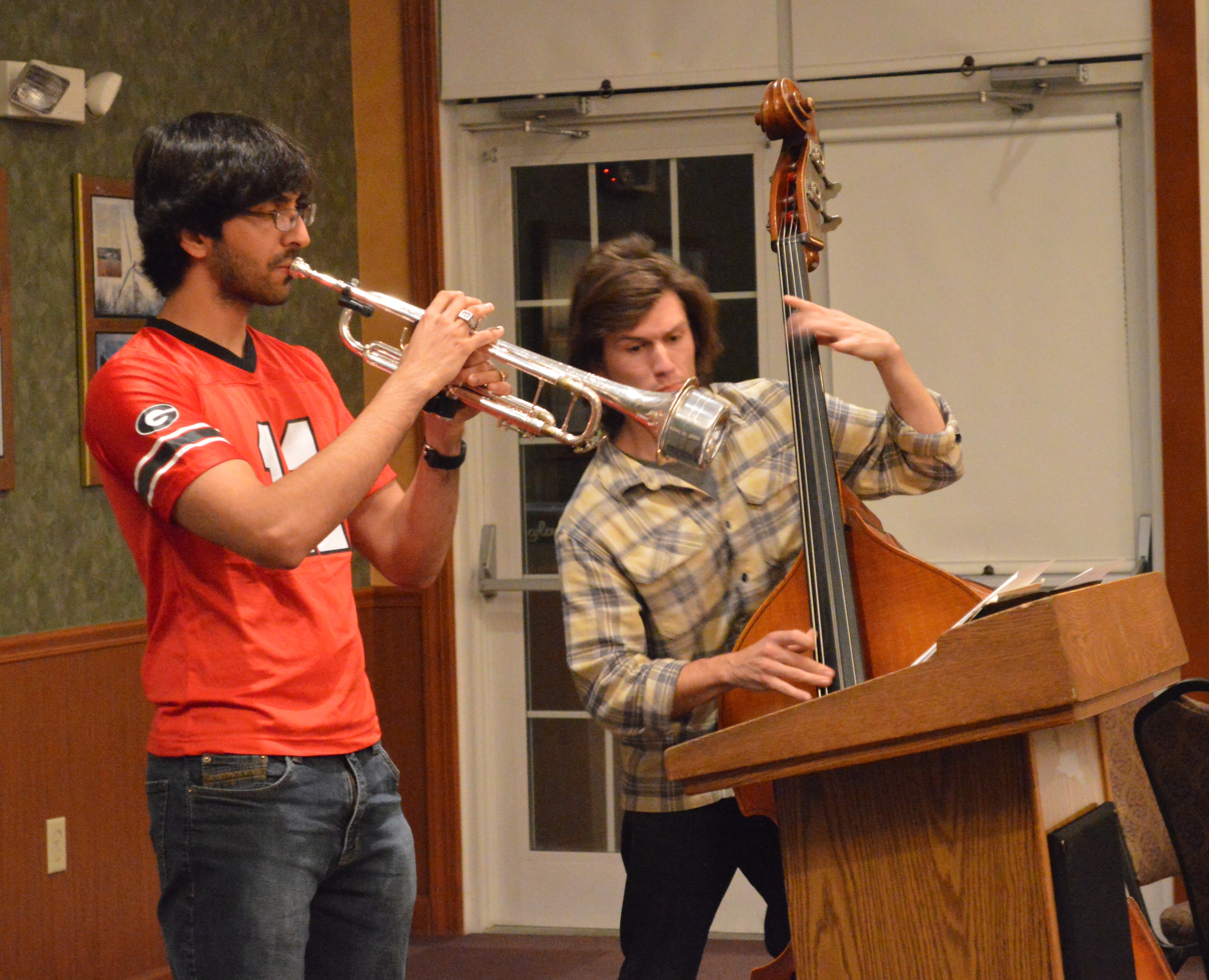
Graduate students Matt Osman and Sarvesh Garimella kicked off the night with a trumpet and bass duet, followed by Daniel Rothenberg who performed a classical violin solo and MIT Professor Raffaele Ferrari’s daughter who played two cello pieces to enthusiastic applause. Other highlights from the show included Jonathan Lauderdale and fourth-year graduate students reading poetry, first year students performing a PAOC parody of the 1978 hit YMCA to great amusement, and the one and only Yavor Kostov donning a cape and performing comedic magic tricks throughout the night. Fifth-year students took a cue from late night host Jimmy Kimmel and wrapped up the variety show by reading entertaining mean “tweets” about themselves. Following the show, there were games and dancing late into the night.
The retreat concluded Sunday with Research Roundup. Each of the attending faculty, students, and postdocs gave a 1-minute summary of their current projects, which was a great way to brush up on PAOC topics ranging from phytoplankton metabolism and evolution to the atmospheres of exoplanets.
Thank you to graduate students Marianna Linz and Tom Beuchler, and administrator Christine Maglio for organizing the 2015 PAOC retreat!